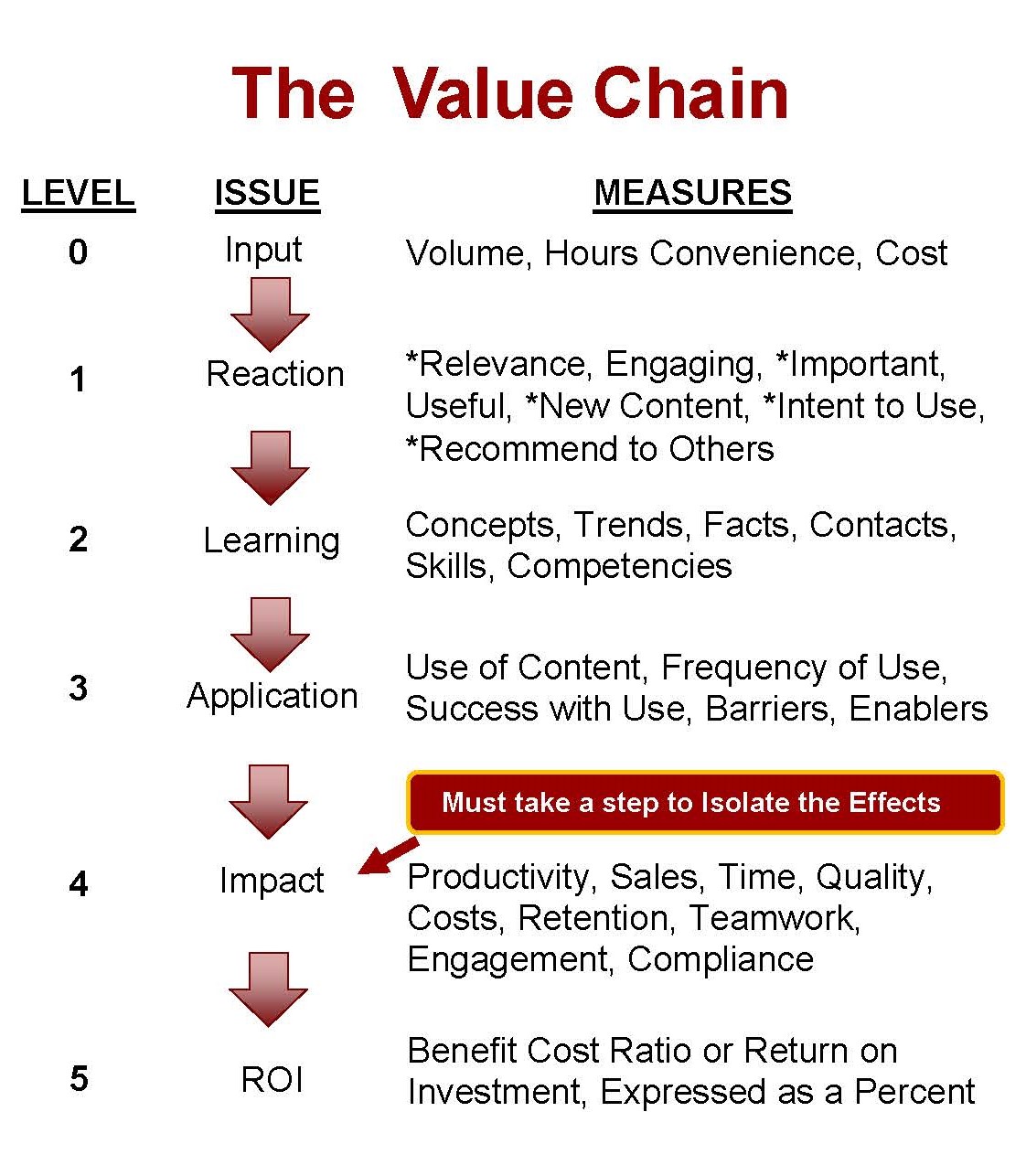Your cart is currently empty!
Proving the Value of Leadership Development
Patti P. Phillips, Ph.D., and Jack J. Phillips, Ph.D.
This article was originally published March 8, 2021, on ChiefLearningOfficer.com.
It’s hard to pick up a publisher’s catalog, a newspaper, or even a magazine without seeing a new book on leadership. With literally hundreds of new books each year, it’s one of the most written about subjects in the world. According to a recent survey from Harvard, there are more than 15,000 leadership books in print. Why are there so many? Are they all different? Do they offer different competencies, different approaches, or different theories? Usually, the answer is no. What makes each book different is the impact that the leadership book has on the audience. More specifically, it’s the impact of leadership development, often based on the leadership book.
The Value of Leadership Development
Think about the value of a leadership development program. Is the value based on how participants react to the program (reaction)? Or what participants have learned from the program (learning)? Or what participants do because of the program (application)? Or the impact of that action (impact)? Or, is it even a process that’s worthwhile, delivering more value than it costs (ROI)? The answer is, actually, all of these. This approach to thinking about leadership development represents a chain of value illustrated in Figure 1.
Figure 1. The Chain of Value

With five levels of value in the chain, the important issue is to measure what seems to be important. Over the years, the emphasis has changed. In the early years of leadership development, the measure was reaction (did they like it). Later, the focus was on what participants learned (acquiring leadership skills). Then it moved to behavior (applying the leadership competencies). In the last decade, the focus has been on measuring the impact (the consequences of the behavior). This is driven by executives who are not satisfied with what is being reported about the value of leadership development, and they are asking for the business alignment and the business connection. To make it believable, they need proof that leadership development delivers value. To explore this, let’s think about three terms that describe the connection of leadership development to impact.
The first is the hypothesis about the leadership development program. For example, you expect good leaders to increase retention, and that may become your hypothesis. But that would only be the case if an increase in retention can be achieved with a change in leadership behavior. So there must be some effort to connect the proposed program (the solution) to retention (the business need).
Next, there is the concept of evidence. You might monitor retention and see that it increased after the leadership development is conducted. But that is only evidence that the program made a difference, other influences could have caused the improvement. Proof is needed.
The proof comes when the effects of the leadership development are sorted out from other influences. The good news is that this step can always be taken with credible results.
The Alignment Model
Sometimes it is helpful to see these issues visually. Figure 2 is the alignment model. It shows how programs are aligned to the five levels of outcomes. Programs start with needs at the top-left side of the model and move through the five levels of needs to design, develop, and implement the program. After it is implemented, it is measured on five levels of outcomes. Along the way, to give it direction and focus, five levels of objectives are developed from the five levels of needs.
Figure 2. The Program Alignment for Leadership Development

The Initial Alignment
Let’s focus on Level 4, Impact. That’s the business alignment. A program should begin with the business need, point A in the figure. If retention is a problem, the turnover rate needs to be lowered. You have a business need, and the hypothesis is that leadership development can improve retention. However, another step must be taken to ensure that the leadership development program can actually improve retention. Perhaps, you have analyzed why team members are leaving. Is it because of the leader’s behavior? If so, then the program could be the solution. In many cases, both of these steps are omitted.
Business Impact Objectives
Alignment continues with point B, where impact objectives are set. When the retention is connected to the leadership program, an impact objective is set. The objectives should be specific, measureable, attainable, relevant, and timebound (SMART), such as reduce voluntary turnover from 23 percent to 10 percent in six months. This provides focus for the program and explains why it’s being conducted. It’s not being conducted to acquire great leadership competencies or to use them in the workplace, but to actually increase the retention of the team. Impact objectives create the expectation and ensure that there will be a focus on the business measure during and after the program. When this objective is met, this is evidence that the program made a difference.
Proof
The most important step occurs after the program has been implemented, when the competencies are in place, and the retention has improved. It is at this point that you must take a step to sort out the effects of the program. This step can range from the classic experimental versus control group, trend line analysis, some type of mathematical modeling, or just an expert estimation from the people who know it best (usually the leaders who are attending the program). If estimates are used, some discussion of what could have caused the retention improvement would be helpful, identifying all the factors, and discussing the linkage. Next, the leaders allocate the portion of the improvement to the leadership program. Then this is adjusted for the error of that allocation with a confidence assessment from the leader. There’s a good chance that one of the first three approaches will work. If they do not, expert estimates are used. The confidence is a number between zero and 100 percent which reflects the error in the allocation. Multiplying the estimate by this number essentially removes the error from the allocation. For example, if a leader gave 30 percent of the improvement in retention to the leadership development program, and the leader is 80 percent confident of that allocation, the adjusted value would be (80 X 30% = 24%), which suggest that 24 percent of the improvement is allocated to the program.
In the last 25 years, a tremendous amount of research has been accumulated to validate the accuracy of this estimation analysis. Remember, estimates are used to isolate the effects of the program only when other, more credible methods cannot be used. The critical point is that isolating the effects can be accomplished. This provides proof that the program has worked, and it makes a huge difference with the executives.
Versatility
What happens if you are not all focusing on retention? Many leadership programs are developed cross-functional, and there is not necessarily one overarching measure identified that the leadership development can improve. In those cases, the individual participants are asked to identify a couple of key performance measures for the team. These are the measures that they want to, or need to, improve with one condition. They must be able to improve the measures, using the leadership competencies with the team. This essentially ensures that there is a business connection in the beginning (when each individual identifies two measures), and they have concluded that leadership development is a solution that can improve these measures.
The two impact objectives are established for each individual. And in a follow-up evaluation, they are providing improvements in those two measures. Again, a step is taken to sort out the effects of the program on those improvements. This shows how much impact is driven by the program. When the improvement data is converted to money, all of the measures can then be added, showing the program’s total monetary benefits. When the monetary benefits are compared to the cost of the program, the ROI is calculated. For an example, we will be happy to send you a case study from our recently published book, Proving the Value of Soft Skills: Measuring Impact and Calculating ROI (ATD Press, 2020).
Measuring the impact and ROI for leadership development is not that difficult, but it represents a shift in the way you approach leadership development. Much of the current focus is on behavior, but executives want the consequences of behavior and not just the behavior. You need to be prepared to provide that data for key leadership programs. Remember, when it comes to delivering and measuring business results from your program, hope is not a strategy, luck is not a factor, and doing nothing is not an option. Change is inevitable; progress is optional. Let us know if we can help.


























